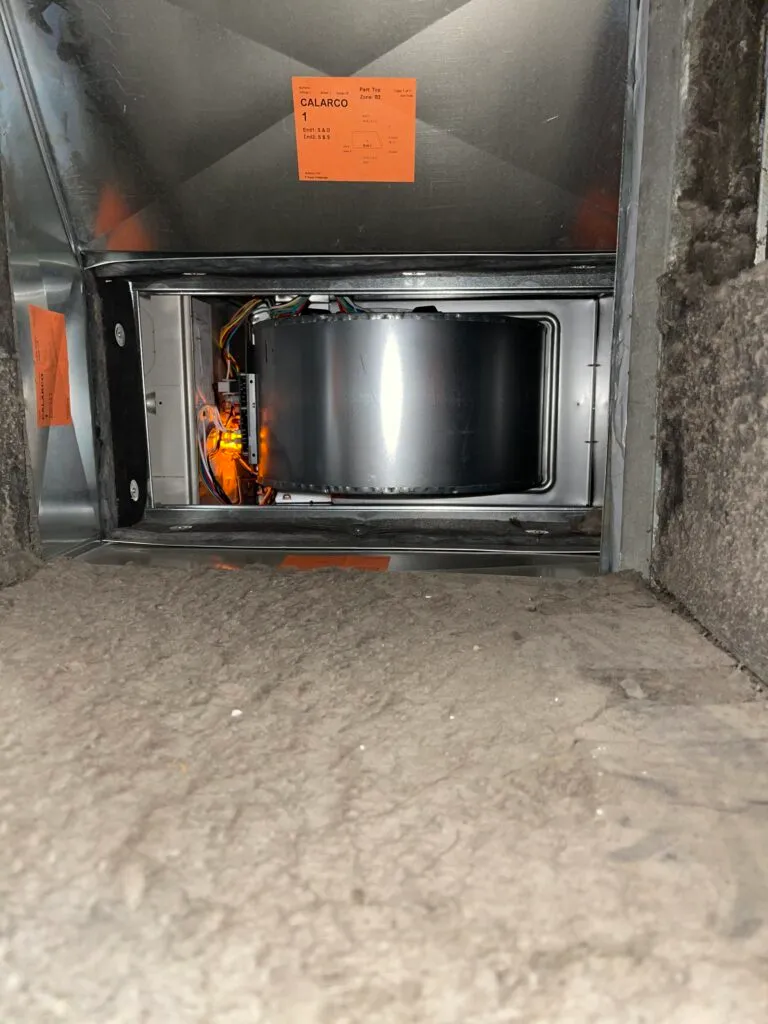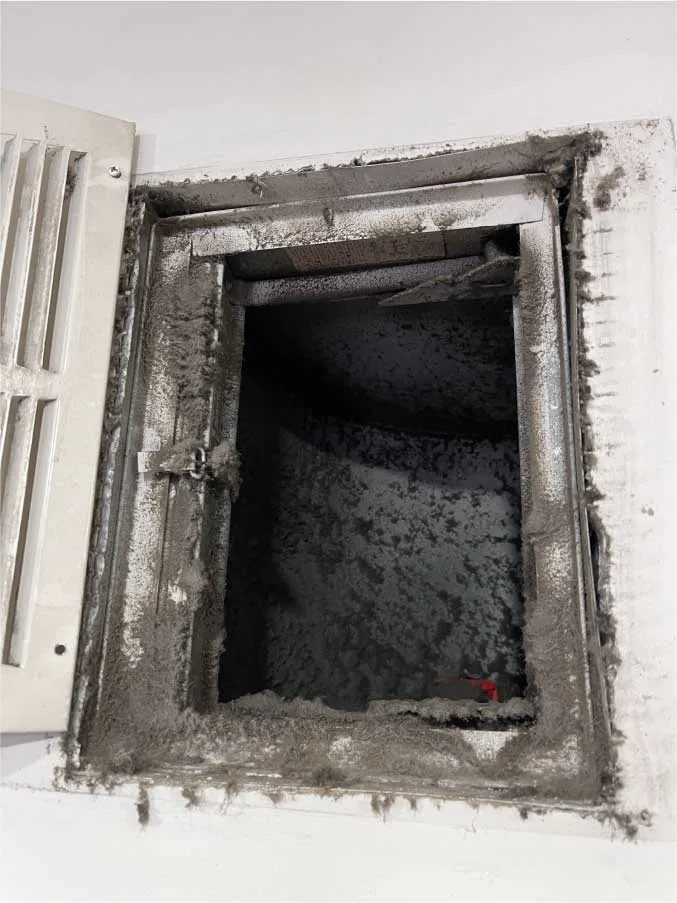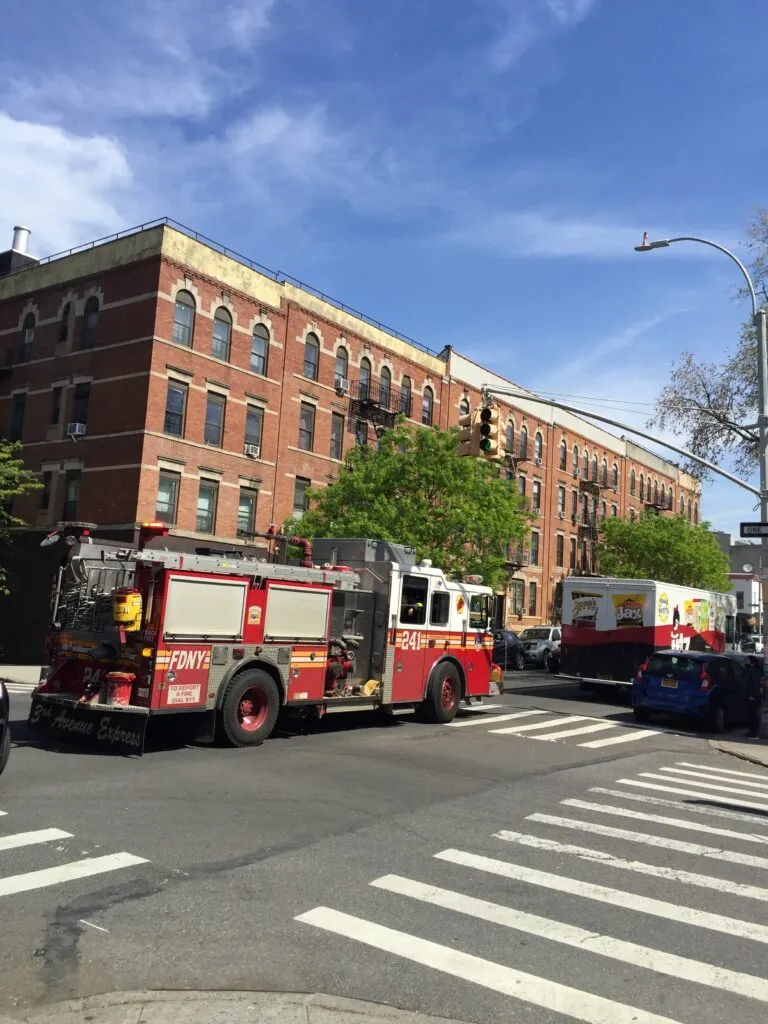How Air Ducts Lose Heat and Cool
Energy Saver, a DOE consumer program, gives you the opportunity to save energy at home and use renewable energy sources.How air ducts lose heat and cool out?
How air ducts lose heat and cool out?
The first thing you should consider before building a new house or remodeling a current one is the energy efficiency of the design. Besides saving money and energy, your home will be more energy-efficient and durable. An ideal moment to consider a renewable energy system that can offer electricity, water heating, or space heating and cooling is during the planning process. Also, you may want to look into financing options.
Performing a home energy assessment (or energy audit) on an existing house is the first step to cutting energy costs and use. The Residential Services Network and the Building Performance Institute have free tools and calculators for home energy assessments.
Approach to Whole-House Systems
In order to maximize home energy efficiency, you need a whole-house system approach, whether you’re building a new one or remodeling an old one. You have to make sure that you and your team of building professionals take all these variables, details, and interactions into account. Other factors to consider include your energy consumption, where you live, and the climate. These factors include:
- Household electronics and appliances
- Sealing and insulation
- Daylight and lighting
- Cooling and heating
- Water heating
- A window, door, or skylight.
Consider working with an energy assessor before making upgrades. There’s a rating system called the Home Energy Score developed by the U.S. DOE that shows your home’s energy efficiency and offers suggestions for improvement. This score measures how energy-efficient a home is based on its structure, heating, cooling, and hot water systems. You can read about the home’s structure and systems in the Home Information section. To save money and achieve a higher score, recommendations show how to make your house more energy efficient.
Energy Usage Estimation for Appliances and Home Electronics
Understand how much money you are spending on your appliances and electronics by knowing how much electricity they use. To decide if you should invest in a more energy-efficient appliance, use the information below to estimate how much electricity an appliance uses.
Home electronics and appliances use a lot of electricity. Here’s how to estimate it:
- Take a look at the Energy Guide label. Labels tell you how much energy and money you’ll spend operating a specific model of appliance. Energy Guides aren’t required for all appliances or home electronics.
- Monitor your appliances‘ electricity usage with an electricity usage monitor.
- Use the formula to figure out energy costs and consumption.
- Put in an energy monitor for the whole house.
Electricity Usage Monitors
Any device that runs on 120 volts can be monitored with an electricity usage monitor. There are electricity usage monitors at most hardware stores for around $25–$50. They won’t work on big appliances that use 220 volts, like electric clothes dryers, air conditioners, or water heaters. Read the manual before you use the monitor.
Simply plug the monitor into the outlet the device uses, then plug the device into the monitor to figure out how much power it uses. You’ll see how much power the device uses. Simply leave everything set up and read the display later to see how much electricity was used in an hour, a day, or longer.
Devices that don’t run constantly, like refrigerators, can use monitors to measure the kWh used over time. Depending on the monitor, you can enter your utility charges per kilowatt-hour to get an estimate of how much the device has cost to run since you plugged it in.
Many appliances use standby power even when they’re off. These “phantom loads” happen with electronics like televisions, stereos, computers, and kitchen appliances. You can use a monitor to figure out how many watt-hours Phantom loads are eating up. Unplug the appliance or use a power strip and turn off all power to the appliance with the switch on the power strip.
Whole-Energy Monitoring Systems
It might be worth your while to install a whole-house energy monitoring system if you’d like more comprehensive information on your home’s energy use (and 240-volt appliances‘ energy use). Depending on the number of circuits you want to monitor, the amount of detail in the data, and the features you want, these systems differ in features and cost. Some monitors require an electrician to install since they go right into the main breaker panel. Others come with a dedicated display and connect to your home’s wireless network, while others are connected to your computer or smartphone.
You can use these monitors to find out how much energy your appliances use, as well as to figure out where and when you use the most energy. This way, you can make calculated efforts to reduce energy costs and save money.
A Guide to Energy Efficiency, Power, and Measurement
There are fundamental rules that govern how energy is transmitted and transformed and how we use it. Efficiency is merely a criterion for success because it indicates how much energy is wasted and how much gets to the destination you intended for the system. Dissipation happens when squandered energy is shifted to multiple stores.
To calculate efficiency, divide the input energy by the desired output.
For example, during transmission or turbine operation, some of the energy initially available is dissipated through heat. Energy efficiency is how much energy is produced per unit of energy used to produce it. You calculate energy efficiency by dividing what you get (useful energy or energy output) by what you put in (input energy). Refrigerators are about 20–50% efficient, incandescent bulbs are about 5% efficient, LED lamps are over 30% efficient, and wind turbines are 59% efficient. There’s about 39% energy efficiency in power generation.
To calculate the energy efficiency of buildings and houses, you need to know the conversion efficiency of heating, lighting, and appliances. Higher numbers mean a more energy-efficient building, although other factors like insulation also play a role.
Energy and Power Measurement
In science, energy is measured in joules (J) or watt-hours (Wh), where one watt-hour equals 3,600 joules.
Watts are the units of power. Energy or appliances are powered by the amount of work, movement, or light they produce over time. A power unit is the amount of energy consumed in one unit of time. You’ll need more electricity, for example, if you have a powerful and bright light bulb.
Here’s How Energy-Efficient Appliances Work
Appliances that are energy efficient are capable of converting small amounts of energy into the energy required to do a job. Some of these appliances can run on lower temperatures and energy settings, allowing them to keep working until the job is done. Here are some energy-efficient appliances:
- Dryers
- Lighters
- Refrigerators
- Water heaters
- Dishwashers
- Air conditioners
- Washing machines
What’s So Great About Energy-Efficient Appliances?
Energy-efficient appliances have these benefits:
Save Money
In addition to saving energy, these appliances also reduce your energy bill. Making energy-efficient home improvements, buying energy-efficient appliances, and taking energy-saving steps can save you tons of money. You can make these energy-efficient improvements:
- Buy Energy Star appliances to cut your electricity bill by 30%.
- You can save up to 80% on energy bills by replacing incandescent light bulbs with halogens, CFLs, or LEDs.
- Go green every day, wash clothes in cold water, and keep tires inflated.
Savings on Energy
By using less energy, energy-efficient appliances can increase energy conservation. The energy you save can be used for different things at home or work.
Eco-Friendly
Energy-efficient appliances help save natural resources like natural gas, oil, coal, and water. By conserving these resources, energy efficiency helps us achieve sustainable development. By reducing pollution through industrial effluents and emissions, energy-efficient appliances can help control pollution.
Appliances With Energy Efficiency: Are They Worth It?
There are many things you should consider when purchasing an appliance, such as how tough the machine will be, how long it will last, and how affordable it is. There is more to determining whether an appliance will be a good investment than just looking at its purchase price alone. Besides the cost of ownership, you should also consider the energy efficiency of an appliance.
Consumers love energy-efficient appliances because they save them money and energy. But the real question is: Is it really worth saving that much? What’s the point of buying energy-efficient stuff?
Well, it’s worth your money.
Depending on the comparison model you choose, Energy Star appliances can save you between 10% and 50% of the energy required, and if you are replacing an old appliance, your savings can be even more.
The Environmental Protection Agency and the Department of Energy have partnered to develop the Energy Star program. With an Energy Star label, you know it’s going to save you money, energy, and the environment. GE, LG, Samsung, Hotpoint, Bloomberg, Beko, Insignia, Marathon, Daewoo, and Crosley are some of the brands that meet Energy Star criteria.
Budget-friendly Energy Star Best Value appliances are also available. Homeowners can compare appliance models using the Energy Guide label. It’ll tell them how much energy each one uses and how it compares to similar ones. An interesting feature is that it compares the model with the least efficient and most efficient models in its class based on energy consumption.
The following appliances save energy.
Room Air Cleaners and Purifiers
Air purifiers and cleaners that are Energy Star certified save a lot of energy. You’d save $25 a year compared to the standard versions because they’re 40% more energy efficient.
Clothes Washers
In an average household, 300 loads of laundry go through the machine a year. You can save 33% on your energy bills and 50% on your water bills with an Energy Star washer. In addition, more efficient motors reduce your dryer’s workload because they spin more water out of your clothes.
Air Conditioner in the Bedroom
You’ll spend less than $75 a year running an Energy Star-labeled room air conditioner, according to the EPA. It’s because those appliances were made with better insulation and have a better seal between the unit and the window.
Freezers and Refrigerators
The EPA estimates that an Energy Star-certified refrigerator offers more energy efficiency and consumes 15% less energy than a 60-watt light bulb. Also, an Energy Star labeled freezer consumes 10% less energy as compared to its non-labeled counterparts.
Dishwashers
There is a 10% reduction in energy and water consumption when you use an Energy Star-certified dishwasher. It saves more than 1,900 gallons of water over its lifetime, according to the EPA. Dishwashers with this certification clean better and faster than older models.
Clothes Dryers
There’s no denying that clothes dryers use a lot of energy. Nonetheless, dryers with the Energy Star label use 20% less energy.
Dehumidifiers
The average dehumidifier uses a lot of energy. According to the EPA, it consumes more energy than a washing machine, dishwasher, and refrigerator combined. Energy Star models save you $175 over their lifetime and use 15% less energy.
Energy-Consuming Home Appliances
Heaters
A home’s total energy consumption is accounted for by heaters, which use 31.3% of it. Energy reduction should be focused on here. Homeowners can find out where energy is being lost by doing an energy audit. Once you identify the problem, you can make changes to make your home more energy efficient. Insulation is a big reason heat escapes. New home builders should use spray foam instead of loose-fill insulation because it’s easier to install.
Water Heaters
The second-largest energy consumer is the water heater, with 13.6% of a home’s energy allocated to it. When it comes to reducing consumption, energy-efficient solutions are a must. In this case, installing a tankless water heater would be a good idea because it only heats water when it’s needed instead of continuously heating it. Solar water heaters are another renewable option. Solar water heaters cost anywhere from $2,800 to $9,800.
Cooling Appliances
The energy needed to cool a house is 10.7% less than the energy needed to heat it. However, it’s still number 3, so efforts should be focused on energy efficiency in that area. In the same way, heat escapes from a home, so can cool air. We should do an energy audit and install insulation here to reduce heat loss. Weatherstripping can also be used to seal gaps and cracks, preventing cool air from escaping and hot summer air from entering. You should also consider updating your appliances since new ones are over 98 percent efficient.
Refrigerators
Refrigerators use 4% of the energy in a home. It’s recommended to switch to a smart fridge since newer appliances use less energy. You’ll also get an alert if there’s a problem with your smart fridge. You should always buy Energy Star-rated appliances to save energy.
Clothes dryers
You can replace a clothes dryer with a newer, Energy Star-rated one too, like you can with refrigerators. Cutting down on clothes dryer use helps save energy. They use 3.2% of a home’s energy. Line drying should be used whenever possible.
Lighting
Lighting takes up 2.8% of your energy budget. Combined with other appliances, it’ll have a bigger impact than on its own. Energy savings come from switching to smart lighting that detects people leaving rooms.
You can save a lot of money and energy by using energy-efficient appliances. When an appliance is Energy Star certified, you know it’s energy-efficient. A washing machine, dryer, refrigerator, dishwasher, and dehumidifier are the most energy-efficient appliances in 2023. Energy-efficient appliances cost more, but you’ll save in the long run and reduce your environmental footprint.
Checking the Energy Efficiency of Your Appliances
You can check your appliances‘ energy efficiency by looking for labels and ratings and by using a meter to figure out their actual electricity usage. It’s neither hard nor complicated, but you’ll need a few details to do it right.
ENERGY STAR labels can be found on the outside of your appliance and its doors. Appliances with this label are the most energy efficient, and there are several types:
- Energy Star labels mean appliances meet federal standards.
- ENERGY STAR appliances with “Save More” labels are more efficient.
- Appliances with the “Most Efficient” ENERGY STAR label are the best.
The Consortium for Energy Efficiency (CEE), a reputable organization, rates appliances on their energy efficiency. Here’s a quick reference for the tiers of this appliance:
- A CEE Tier 1 rating is the same as an ENERGY STAR rating, which means it’s efficient.
- Tiers 2, 3, and 4 are more efficient than Tier 1. Every one of them meets ENERGY STAR‘s “Save More” standards.
- CEEE—The most effective CEE Advanced Tier meets ENERGY STAR‘s “Most Efficient” criteria.
Air Ducts Energy Lost
Installing air ducts in a house requires contractors to work with separate pieces. Leaks can happen even when the workers tighten and secure the ducts. An air leak happens when there’s a hole or gap in the ductwork. It’s the air that you’ve already cooled or heated, so you’re wasting energy on air that doesn’t help you relax.
In an average home, leaks in the ducts cause close to 20 percent of conditioned air to escape. There’s a chance you’ll lose more than normal if the system is leaky. In other words, you’re spending money to heat or cool air, yet that air isn’t heating or cooling your house.
As a result, you’ll waste a lot of money on your energy bills. It might also be hard to keep your house cool. Some rooms in your house might not get enough air if too much air leaks from your ducts.
What You Can Do To Fix It
An HVAC company can send experts to check your air ducts if you suspect you might have leaky ones. During the inspection, they’ll test your ducts for efficiency. Professionals will fix any problems they find, like gaps or holes.
Any leaks will be fixed with special tape applied over small holes and gaps. In some cases, they may have to replace your ductwork if it’s too worn out or has too many holes. You’ll have all your ducts sealed by your technician.
Insulating your air ducts may also be recommended by an expert. If you have ducts that aren’t sealed in your attic, for example, they could let some air escape. It’ll improve the efficiency of your system and reduce your energy bills if your technician insulates your ducts.
Final Thoughts
Nobody wants to pay high energy bills. People always look out for energy-minimizing options, and when it comes to such options, the usage of energy-efficient appliances comes as a lifesaver.
You should first conduct an energy assessment in your house, figure out which appliances are consuming the most energy, and then take the required actions.




